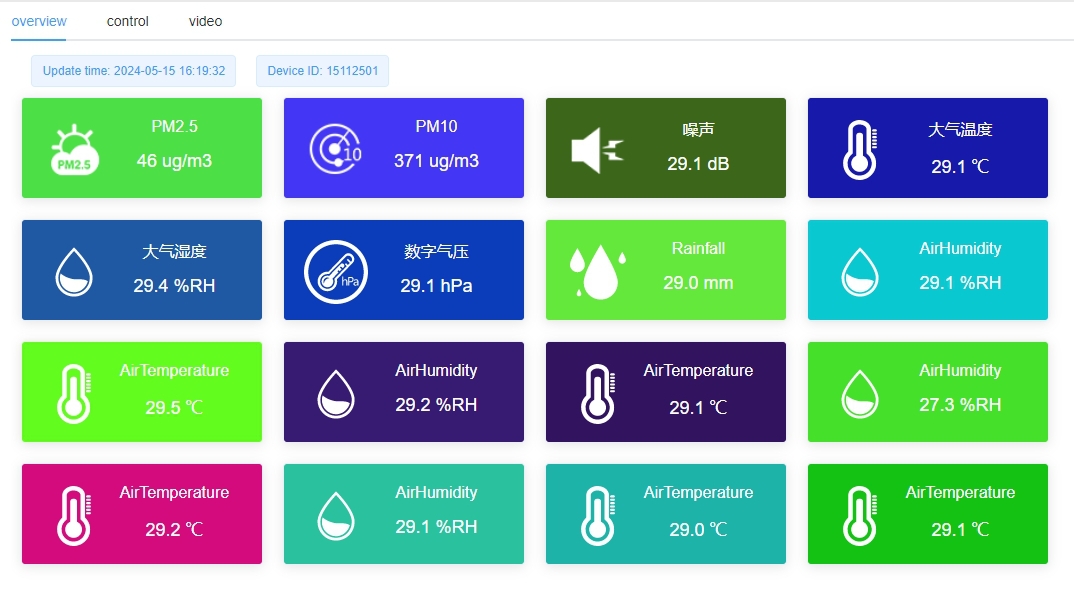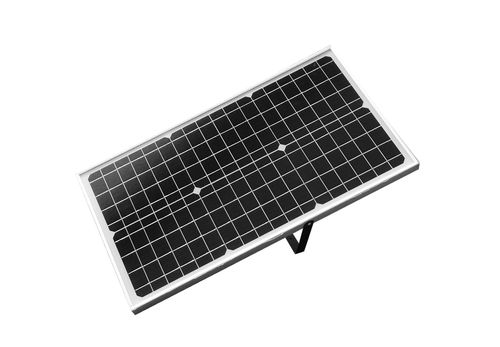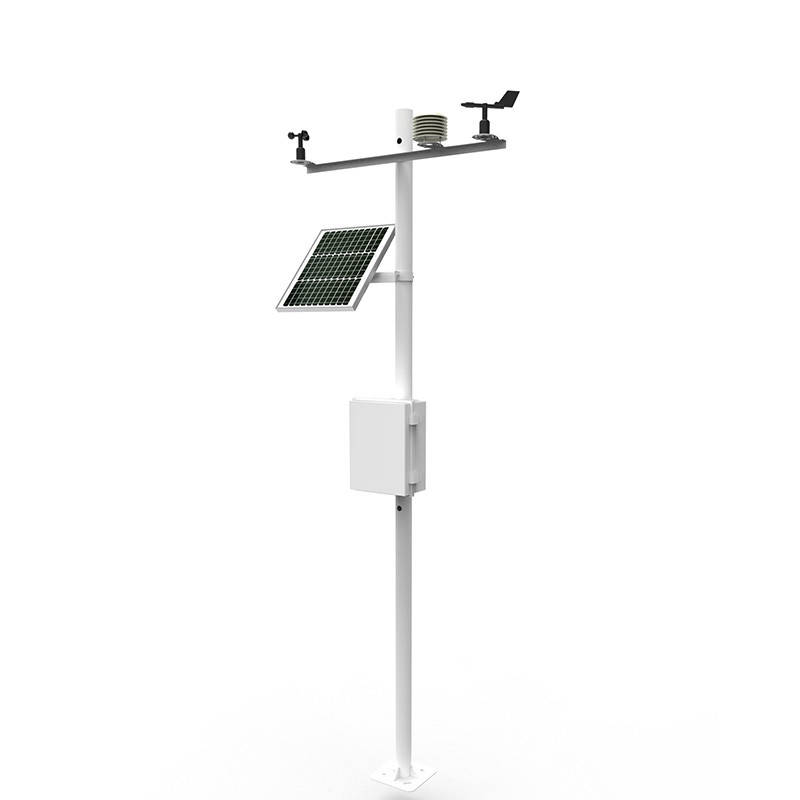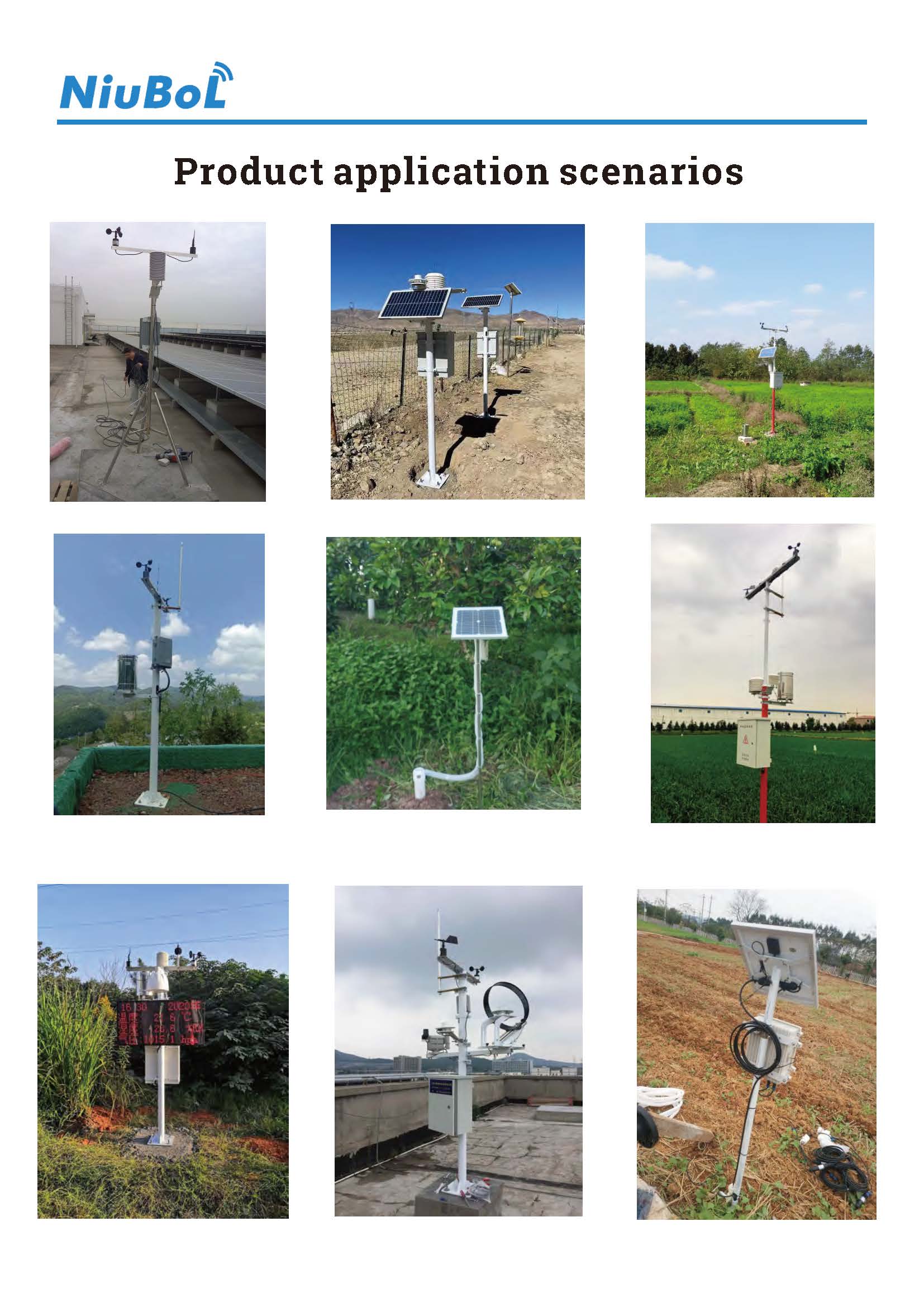

— Blogs —
—Products—
 Consumer hotline +8618073152920
Consumer hotline +8618073152920 WhatsApp:+8615367865107
Address:Room 102, District D, Houhu Industrial Park, Yuelu District, Changsha City, Hunan Province, China
Product knowledge
Time:2024-10-02 20:35:50 Popularity:570
Weather station is a scientific facility for observing and recording atmospheric conditions, which collects a large amount of meteorological data through regular and continuous observation of various meteorological elements, such as temperature, humidity, wind speed, wind direction, barometric pressure, precipitation and so on. These data are processed and analysed not only to provide people with daily weather forecasts, but also to provide important support for meteorological research, climate change monitoring, agricultural production, aviation and navigation safety and other fields.
The sensors in the weather station are the key components for monitoring the information of various meteorological elements. Common sensors include:
1. Temperature sensor: used to measure the temperature of the atmosphere.
2. Humidity sensor: used to measure the humidity of the atmosphere.
3. Barometric pressure sensor: used to measure the pressure of the atmosphere.
4. Wind speed sensor: Used to measure the wind speed.
5. Wind direction sensor: used to measure the wind direction.
6. Rainfall Sensor: Used to measure rainfall.
7. Solar Radiation Sensor and UV Sensor: to assess solar energy and UV intensity.
8. Soil sensors (in specific applications): to monitor soil temperature and humidity. Soil temperature sensors: for measuring soil temperature. Soil moisture sensors: for measuring soil moisture.
9. Light sensors: for measuring sunlight duration and light intensity.
10. Other specific sensors: such as negative oxygen ion sensors, evaporation sensors, etc., according to the need to configure.
These sensors are usually placed in the observation field and connected to the data collector through signal lines.

1. Sensors: as mentioned earlier, used to measure various meteorological elements.
2. Data collector: responsible for centralised collection of data collected by sensors and transmission of data to the data processing and storage system.
3. Data processing and storage system: to process, analyse and store the collected data.
4. Communication equipment: Used to transmit data to a remote server or data centre, by wired or wireless means.
5. Power supply: to provide a stable power supply for the meteorological station, which can use utility power, solar panels and other renewable energy sources.
The power supply system of a weather station usually adopts a variety of power supply methods to ensure stable operation under different environments and conditions, mainly including:
5.1. Mains power supply: direct use of alternating current (AC), suitable for areas with a stable power supply. It is connected to the weather station by wiring to ensure continuous power input.

5.2. Solar power supply: Solar panels are used to convert solar energy into electrical energy, which is stored in a battery. This method is particularly suitable for remote or areas not easily accessible to the grid. The power of the solar panel (e.g., 12V50W) and the capacity of the battery (e.g., 12V65AH) are configured according to the actual requirements to ensure that the normal operation of the weather station can be maintained even on continuously cloudy days.
5.3. DC power supply: Suitable for small or portable weather stations using a direct DC power supply, e.g. 12V or 5V, possibly through a solar panel or using a DC power adapter.
5.4. Hybrid power supply: a combination of mains and solar power, with the addition of an AC/DC conversion control unit to ensure that the solar system can switch seamlessly to provide an uninterrupted power supply in the event of an interruption to the mains power supply. In addition, it may be equipped with a battery pack as a back-up power source to cope with various situations of unstable power supply.
5.5. Other special power supply: Under specific circumstances, wind power generation, small generators or mobile power supply may also be used as supplementary or emergency power supply.
With these diversified power supply strategies, the meteorological station is able to adapt to a variety of environments, from urban to field, to ensure the continuity and reliability of data collection. Regular maintenance and proper system design are key to ensuring the efficient operation of these power supply systems.

6. Weather Station Rack: Used to place various weather element sensors, solar panels, collectors and transmission modules and other components.
7. Protective devices: to protect the sensors from external environmental influences.

The role and value of the weather station is mainly reflected in the following aspects:
1. Providing weather forecast: the data collected by the weather station is an important basis for weather forecast, and by analysing and processing these data, the future weather conditions can be predicted to provide people with timely weather warnings and forecasts.
2. Meteorological research: the data provided by meteorological stations are also important information for meteorological research, which can help scientists better understand the changing law and mechanism of the atmospheric environment.
3. Climate change monitoring: data from meteorological stations can be used to monitor climate change, assess the trend and impact of climate change, and provide scientific basis for coping with climate change.
4. Agricultural production: Data from meteorological stations are of great significance in guiding agricultural production, which can help farmers rationally arrange farming activities and improve the efficiency and effectiveness of agricultural production.
5. Aviation and navigation safety: data from meteorological stations are also important for aviation and navigation safety, which can provide real-time weather information to help pilots and crews avoid meteorological risks and ensure aviation and navigation safety.

V. Summary
A weather station is a scientific facility for observing and recording atmospheric conditions, which carries out regular and continuous observation and data collection of various meteorological elements such as temperature, humidity, wind speed, wind direction, barometric pressure, precipitation and so on, by means of component parts such as sensors, data collectors, data processing and storage systems, communication equipment and power supply.
The data from meteorological stations have important application values in the fields of weather forecasting, meteorological research, climate change monitoring, agricultural production and aviation and navigation safety. Through observation and data collection at meteorological stations, people can better understand the pattern and mechanism of change in the atmospheric environment and provide scientific basis and decision-making support for coping with climate change and natural disasters.
Related recommendations
Sensors & Weather Stations Catalog
Agriculture Sensors and Weather Stations Catalog-NiuBoL.pdf
Weather Stations Catalog-NiuBoL.pdf
Related products
 Combined air temperature and relative humidity sensor
Combined air temperature and relative humidity sensor Soil Moisture Temperature sensor for irrigation
Soil Moisture Temperature sensor for irrigation Soil pH sensor RS485 soil Testing instrument soil ph meter for agriculture
Soil pH sensor RS485 soil Testing instrument soil ph meter for agriculture Wind Speed sensor Output Modbus/RS485/Analog/0-5V/4-20mA
Wind Speed sensor Output Modbus/RS485/Analog/0-5V/4-20mA Tipping bucket rain gauge for weather monitoring auto rainfall sensor RS485/Outdoor/stainless steel
Tipping bucket rain gauge for weather monitoring auto rainfall sensor RS485/Outdoor/stainless steel Pyranometer Solar Radiation Sensor 4-20mA/RS485
Pyranometer Solar Radiation Sensor 4-20mA/RS485
Screenshot, WhatsApp to identify the QR code
WhatsApp number:+8615367865107
(Click on WhatsApp to copy and add friends)